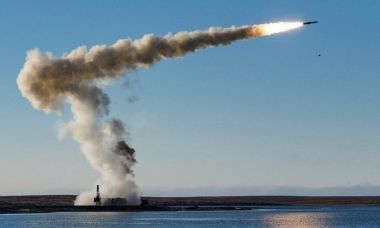The Power of Russia’s Onyx Missile and Ukraine’s Defense Challenge
Russia’s deployment of the formidable supersonic Onyx missile has unleashed chaos in Ukraine, particularly in the city of Odessa. This missile’s high speed and maritime capabilities have rendered the Ukrainian military helpless in their attempts to intercept it.
Ukraine’s Failed Defense Efforts
Ukraine has claimed to have shot down 18 out of 38 Russian weapons targeting the southern provinces. These weapons included the Kalibr and Iskander-K cruise missiles, as well as 13 unmanned aerial vehicles (UAVs) used for suicide attacks. However, the Ukrainian forces were unable to block any of the 7 hypersonic anti-ship P-800 Onyx missiles or the 4 Kh-22 bombs used by Moscow in their assault.
Similar results were witnessed the day prior when Ukraine’s air defense allowed 6 Onyx missiles and 8 Kh-22 missiles to penetrate the targeted areas in the southern province of Odessa.
The Unmatched Capabilities of the Onyx Missile
The Onyx missile’s incredible speed, reaching around 3,200 km/h, exceeds the speed of sound by 2.6 times. It maintains high altitudes during its trajectory to conserve fuel, descending to a mere 10-15 meters above the sea surface when approaching the target. These low-altitude maneuvers make it extremely challenging for air defense systems to detect and destroy the Onyx missile.
Ukraine’s Acknowledgment and Recommendations
Ukrainian Air Force spokesperson Yuri Ignat admitted that their current air defense systems are unable to intercept the Onyx missiles. He mentioned that they can only combat the missiles through electronic warfare measures, explaining why some missiles did not reach their intended targets.
In order to bolster their defense capabilities, Ukrainian officials emphasize the urgent need to reinforce their air defense network in the southern provinces. They propose the deployment of advanced Western missile systems such as the Patriot and SAMP/T to counter the threat.
Russia’s Bastion-P Missile System
Russia has repeatedly declared the deployment of the Bastion-P missile system, primarily to fire Onyx missiles against valuable targets in Ukraine. The recent Onyx missile attacks appear to originate from the Bastion-P stronghold situated on the Crimea peninsula.
The Formidable Bastion-P Missile System
The Bastion-P missile system consists of multiple vehicles equipped with missile launchers. Each vehicle is capable of carrying two Onyx missiles, which can be launched with precision and devastating effect.
The Might of the Onyx Missile
The Onyx missile boasts a formidable range of 600-800 kilometers and carries a powerful warhead weighing 250 kg. While originally designed for naval targets, the Russian military has adapted this weapon for ground strikes during their campaign against rebel factions in Syria back in late 2016.
The Onyx missile employs an inertial guidance system and activates its active radar to home in on the target during the final stage of the attack. In ground missions, the missile can either utilize the GLONASS satellite navigation system or radar to successfully engage fixed targets or track high-contrast objects amidst their surroundings.
Conclusion
The usage of the Onyx missile by Russia poses a significant challenge to Ukraine’s national security. The Ukrainian authorities must take immediate action to upgrade their air defense systems to effectively counter this lethal threat. Failure to do so could further jeopardize the safety and stability of Ukraine’s southern provinces, leaving them vulnerable and defenseless against future attacks.


